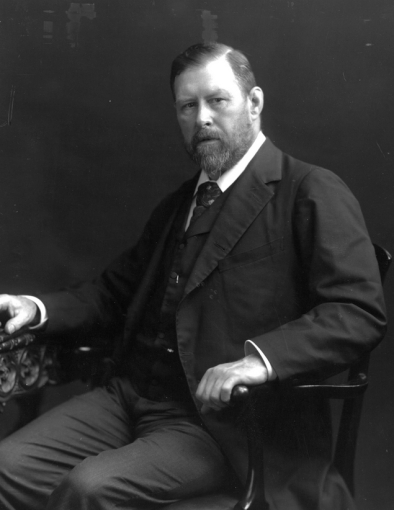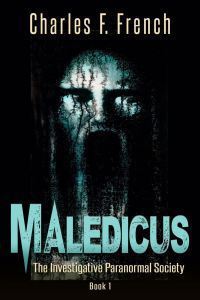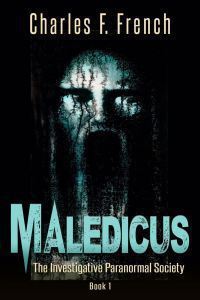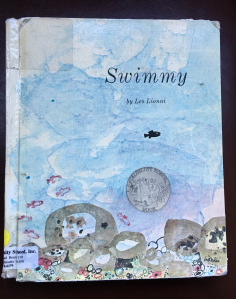K.D. Dowdall's Blog, page 49
December 3, 2017
Dear Republicans, The President’s Mental Health Status Requires Attention, Not Avoidance
This is were America is right now, and if we speak out loudly enough, maybe, just maybe, we will be heard. Karen

Prudence L. Gourguechon, MD.
NOTE: The following blog is an updated version of a post that I published in July 2017 (President Trump Is Not Fit To Serve, Based On Army Manual)
On the evening of July 5, 2017, I was watching the MSNBC’s TV host, Lawrence O’Donnell interviewing a psychiatrist from Chicago, where the guest, Dr. Gouurguechon was explaining how the Army has an 100 year old field manual which includes an updated section on how to evaluate if a candidate is unfit for leadership positions and if a leader is no longer able to continue in such a role.
The republican President Donald Trump, as the military’s Commander-In-Chief would fail this objective criteria. bigly. Yet, this is who, the Republican Party has assisted to become our 45th President of the USA and, for political expediency reasons, the majority of republican legislators continue to enable and cover for his numerous…
View original post 1,377 more words


December 2, 2017
World-Building, Part 4, by D. Wallace Peach!
If you want to learn how to develop incredible fantasy worlds, read D. Wallace Peach’s World Building Series, she is a master of the craft! K. D. Dowdall
Many thanks to Chris for letting me chat about world-building. It’s been a pleasure to hang out and talk about writing. In this final post of the series, I want to share thought-starters for each of the major systems that make up a world. Fantasy author Brandon Sanderson, in a discussion about world-building, stated that […]
via World-building: Thought Starters – Guest Post by, Diana Peach… — Chris The Story Reading Ape’s Blog


December 1, 2017
A Review: THE GENIE HUNT by author, M. C. Tuggle
A new novel, by M. C. Tuggle, The Genie Hunt, is so engaging that I could not put it down. I continued reading it until the end, without stopping. It is not often that I want to reread a novel that I just finished reading. It is that good. It is a rather unique story about a lawyer, a reformed law-breaker, a kidnapped Genie, and a crime. It is a story about a friendship under duress, life-threatening danger, and a who-done-it mystery. The writing is superb, smooth transitions through scenes, characters that are so real that I was sure I knew them. It was the great dialogue, however, that moved the story along, including, strong pacing and time elements, that rang true.
As the investigation drew closer and closer to the perpetrators of the crime, the action grew and so did the breath-taking danger. And, oh yes, there is a real Genie with a complex set of circumstances. The main characters, Coot Pickard, and his lawyer friend, Buddy Vuncannon, have been friends since childhood. However, they are total opposites in personality and lifestyle. It is often said, that in relationships, opposites do attract and in this case, it adds to the interesting complexity of the characters. I found this story to also be about a well thought out ode to the wonder of friendship under great duress, because the evidence clearly points to Coot Pickard. But, as is often said, “the devil is in the details” and in this story, it is certainly true. The ending is very satisfying and since this novel is book 1, in a new series entitled, Spook Hunters, by author, M. C. Tuggle, I look forward with great anticipation to book 2 of the Spook Hunters. I highly recommend this intriguing story! 5 stars!


November 29, 2017
Releasing Writing Fears by Artemis Delmar
Releasing Writing Fears
Sharing fears of self-doubt, apprehension, and feeling that maybe no one will like my book anyway or am I making a fool of myself for thinking I could be a great writer one day. However, through dialogue with other writers, we soon discover that most of us have the same fears, as Delia so clearly writes about on her blog. https://artemisdelmar.wordpress.com/2017/11/28/releasing-writing-fears/
I like writing but I am hesitant about sharing. Self-doubt, apprehension, and fear continuously rear their putrid heads over and over again. The self-doubt and apprehension lead me to write. In part, I believe that this is an oxymoron because the fear and apprehension should make me run from the craft.
The exploration of my language leaves me at a loss sometimes. I am lost in my thoughts and words— constantly. I am lost in observation and I am lost in the wonderment of exploration. I can explore the darkest thoughts of my mind and create something truly unique or I can create a poem that embraces every romantic idea I have ever come across and yet somehow, I feel it’s never good enough.
It’s not good enough so it’s not worth sharing.
I have so many creations, characters, and plots that are begging for exposure.
They haunt my thoughts…
View original post 279 more words


November 27, 2017
The Sorcerer’s Garden by D. Wallace Peach
[image error]In the story of The Sorcerer’s Garden by D. Wallace Peach, we see the overall story as fascinating and rich in details that excite our need for fantasy and storytelling. At first glimpse, it is a story about dragons, courage, adventure, war, soul-thieves, and the good verses the bad in people.
The story is really two stories, that in the end, become one where fantasy and reality merge. The main characters, Madlyn, Cody, Dustin, and Lillian, each have different world views that conflict with each other, but all are necessary for everyone to cope with the approaching sense of loss that is meaningful to each one, a natural human response to things out of our control.
Yet, if one draws back the curtain of this story, it is a unique telling of how fantasy interplays with tragedy, grief, and loss, in the real world. We are often changed by the realization that we live both in the real world and our perceptions of that world are often a fantasy from a deep psychological need to believe that things are better or worse, than they are.
The author, in my opinion, is telling us something about ourselves and that makes this story so much more than what it first appears to be. The Sorcerer’s Garden is a study of human behavior and how to fight human urges of greed, scarcity, power, war, and cruelty that must be continually fought to create a more caring world through the realization that there is no need for greed, power, and cruelty, because there is no scarcity. There is only a perception of scarcity that steals our souls, formed out of our human fears. In the end, it is fear itself that leads to all the pain and suffering in the world. I highly recommend this truly unique and powerful story. 5 stars


November 26, 2017
Roosevelt Franklin–Book Lover–From Maledicus: The Investigative Paranormal Society Book I
MALEDICUS by Charles F. French, is an evocative and riveting story, that will keep you up late into the night, because you won’t be able to put it down. This story is not to be missed. 5 stars!
 charles french words reading and writing
charles french words reading and writing

This is a revisiting of several posts I wrote about the characters from Maledicus: The Investigative Paranormal Society Book I. Book 2, Gallows Hill, will be out in January or February.
This entry is one of several posts I will write about some of the characters in my first novel. I hope you enjoy it.
The protagonist of my supernatural horror thriller Maledicus: The Investigative Paranormal Society Book I is a retired History professor, living in Bethberg, a small town in northeastern Pennsylvania. He is a deeply complex man, influenced by, among other things, his service in the Vietnam War and the profound and loving marriage with his now deceased wife.
Roosevelt has several deep enjoyments in life—eating, drinking good whisky, especially single malt Scotch, and smoking high level cigars, but his primary passion in life is books. A visitor to his home would notice, more…
View original post 266 more words


November 25, 2017
Word Painting – The Fine Art of Writing Descriptively
Word Painting – The Fine Art of Writing Descriptively by Rebecca McClanahan (an excerpt from Writer’s Digest, January 2015) Here are four secrets to keep in mind as you breathe life into your characters through description.
Description that relies solely on physical attributes too often turns into what Janet Burroway calls the “all-points bulletin.”
It reads something like this: “My father is a tall, middle-aged man of average build. He has green eyes and brown hair and usually wears khakis and oxford shirts.”
This description is so mundane, it barely qualifies as an “all-points bulletin.” Can you imagine the police searching for this suspect? No identifying marks, no scars or tattoos, nothing to distinguish him. He appears as a cardboard cutout rather than as a living, breathing character. Yes, the details are accurate, but they don’t call forth vivid images. We can barely make out this character’s form; how can we be expected to remember him?
When we describe a character, factual information alone is not sufficient, no matter how accurate it might be. The details must appeal to our senses. Phrases that merely label (like tall, middle-aged, and average) bring no clear image to our minds. Since most people form their first impression of someone through visual clues, it makes sense to describe our characters using visual images. Green eyes is a beginning, but it doesn’t go far enough. Are they pale green or dark green? Even a simple adjective can strengthen a detail. If the adjective also suggests a metaphor—forest green, pea green, or emerald green—the reader not only begins to make associations (positive or negative) but also visualizes in her mind’s eye the vehicle of the metaphor—forest trees, peas, or glittering gems.
The problem with intensifying an image only by adjectives is that adjectives encourage cliché.
It’s hard to think of adjective descriptors that haven’t been overused: bulging or ropy muscles, clean-cut good looks, frizzy hair. If you use an adjective to describe a physical attribute, make sure that the phrase is not only accurate and sensory but also fresh. In her short story “Flowering Judas,” Katherine Anne Porter describes Braggioni’s singing voice as a “furry, mournful voice” that takes the high notes “in a prolonged painful squeal.” Often the easiest way to avoid an adjective-based cliché is to free the phrase entirely from its adjective modifier. For example, rather than describing her eyes merely as “hazel,” Emily Dickinson remarked that they were “the color of the sherry the guests leave in the glasses.”
Strengthen physical descriptions by making details more specific.
In my earlier “all-points bulletin” example, the description of the father’s hair might be improved with a detail such as “a military buzz-cut, prickly to the touch” or “the aging hippie’s last chance—a long ponytail striated with gray.” Either of these descriptions would paint a stronger picture than the bland phrase brown hair. In the same way, his oxford shirt could become “a white oxford button-down that he’d steam-pleated just minutes before” or “the same style of baby blue oxford he’d worn since prep school, rolled carelessly at the elbows.” These descriptions not only bring forth images, they also suggest the background and the personality of the father.
Select physical details carefully, choosing only those that create the strongest, most revealing impression.
One well-chosen physical trait, item of clothing, or idiosyncratic mannerism can reveal character more effectively than a dozen random images. This applies to characters in nonfiction as well as fiction. When I write about my grandmother, I usually focus on her strong, jutting chin—not only because it was her most dominant feature but also because it suggests her stubbornness and determination. When I write about Uncle Leland, I describe the wandering eye that gave him a perpetually distracted look, as if only his body was present. His spirit, it seemed, had already left on some journey he’d glimpsed peripherally, a place the rest of us were unable to see. As you describe real-life characters, zero in on distinguishing characteristics that reveal personality: gnarled, arthritic hands always busy at some task; a habit of covering her mouth each time a giggle rises up; a lopsided swagger as he makes his way to the horse barn; the scent of coconut suntan oil, cigarettes, and leather each time she sashays past your chair.


November 18, 2017
How Reading-Aloud Made Me the Teacher and Person I Am Today.
This is a wonderful real life story of how an amazing teacher, Jennie, gives voice to children by reading aloud and helps to create a love of learning through reading. It also makes a world of difference for parents to give the gift of reading aloud to children as both parent and child learn to share and the memories that are made, create a bond that lasts forever. Thank you, Jennie, and Happy Thanksgiving.
My very first day of teaching preschool in Massachusetts, thirty-two years ago, was both career and life altering. Lindy, my co-teacher, asked me to read the picture books to children each day after our Morning Meeting. Sure (gulp)! I was new, scared, and unfamiliar with many children’s books. I had not been read to as a child, except for The Five Chinese Brothers from my grandmother. I still remember the page that opens sideways, with the brother who could stretch his legs. One book, and to this day I remember it vividly.
The book I read to the children on that first day of school was Swimmy, by Leo Lionni. It was magical for me, and for the children. The story line, the art, the engineering, the words… it was a taste of something I knew I had to have. And, I couldn’t get enough.
The next few decades…
View original post 664 more words


November 10, 2017
Happy Birthday to Bram Stoker!
Lucky are the students, faculty, and staff, who were able to attend the HAPPY BIRTHDAY TO BRAM STOKER! Celebration at Lehigh University Libraries. Plus, the opportunity to watch the 1931 Movie Dracula! The best part, is sharing in a discussion about the movie with Professor Charles F. French!
 charles french words reading and writing
charles french words reading and writing

Today is the 170th anniversary of Irish writer Bram Stoker’s birthday. As the author of Dracula, a book I consider one of the finest Gothic novels ever written, he has had enormous impact on the worlds of writing, theater, and film.
To commemorate this day, the wonderful librarians at Lehigh University’s Linderman Library organized a showing of the classic film Dracula (1931) and starring Bela Lugosi. I was asked to give a short presentation about the film, which I enjoyed doing. Given the opportunity to talk about this book and film, I always grasp the chance.

So I wish Bram Stoker a happy birthday!
 Maledicus: The Investigative Paranormal Society Book I by Charles F. French is available for purchase on Amazon either as an ebook or a print book!
Maledicus: The Investigative Paranormal Society Book I by Charles F. French is available for purchase on Amazon either as an ebook or a print book!
Please follow the following links to find my novel:
Thank you!
The book trailer:
Maledicus:Investigative Paranormal…
View original post 7 more words


November 8, 2017
The 5 Secrets to Developing Better Characters | BookDaily
[image error]The 5 Secrets to Developing Better Characters | BookDaily #AuthorTips
By TA Sullivan
November 8, 2017
The 5 Keys to Character Development
My friend wanted me to attend a writing seminar with her, so I agreed to go. However, the summary said it was geared more for novices, so I didn’t really expect to learn much. Boy, was I surprised.
The instructor, a creative writing instructor from one of the top schools in the south, came in and took her place at the podium. After introducing herself and giving us a brief synopsis of what the presentation was to be about, she asked us to take five minutes to describe her as if she was a character in one of our stories.
The results were pretty much as expected. Most of the attendees gave similar descriptions to this:
Melanie is a 30-ish woman with brown, shoulder-length hair, dressed in a gray suit with a lacy, rose-colored blouse.
She told us to hang on to those descriptions, and then she went on to give us her presentation. That’s when we all learned how wrong we had been in actually thinking we had described a character. What we had described was a one-dimensional, uninspired, and uninteresting person.
A story character should be as varied as someone in real life. They should have substance, not just a description. They should come alive for the reader and become someone that the reader can actually believe in. The 5 primary attributes that each character needs in order to achieve this kind of depth are:
Mannerisms/Traits: These are the tics or compulsions that a character displays consistently. For example, the character paces when nervous or agitated, chews gum or tobacco, hums to him- or herself, blinks excessively, clicks a pen without realizing it, taps the end of a pencil on desk all the time, bounces his or her foot, plays with his or her hair or runs his or her fingers through his or her hair, chews his or her fingernails, rubs at a scar on chin, cheek, nose, etc., stutters, or laughs inappropriately.
Behaviors/attitudes: These are how the character displays his or her feelings. For instance, the character might be belligerent, argumentative, disagreeable, a yes-man, Polly Anna-like, naïve, happy, bland, or teasing.
Scents (what smells are associated with the character, if any): Most memories are related (and often triggered) by scent. Yet, as authors we tend to forget about the smell-factor. Perhaps, because books (even electronic ones) don’t yet include the ability to smell our characters or their surroundings. Still, even a description of an odor or an aroma can evoke a sense memory and help our readers remember and relate to our characters. So, include references to scents whenever possible. As it is, most people have a particular scent, and those that wear perfumes or aftershaves, or use perfumed dryer sheets, usually have a cloud of odors surrounding them. Or perhaps, your character forgot to bathe, was climbing about in a dumpster, or lives with a herd of cats.
Sounds (what sounds are associated with this character): Sounds are another overlooked, yet memorable way to help your readers remember and relate to your characters. Perhaps your character whistles, imitates bird calls, makes clicking sounds (of fingernails on a desktop or keyboard, of tongue against the roof of the mouth) or tapping sounds (of shoes or cane or fingers while texting), drags his or her foot, is associated with a rustling (of petticoats, silk fabric against skin), snapping (of cape or of gum), clomping (of boots or shoes), or wheezing (due to asthma or being overweight).
Looks: Physical attributes are the easiest to describe and usually what we (as authors) tend to focus on. However, since most readers are inclined to let their own imaginations flesh out the character, this is where the author needs to be more sparing. Include only a few basics and let the reader do the rest. For instance, relate your character’s hair color, hair style, eye shape and color, colors worn (bright colors, dull colors), clothes styles, height, weight, or unusual physical features (scars, nose size, ear shape, piercings, missing limbs, or tattoos), but describing the shoe size, exact height, and a detailed discussion of the character’s wardrobe is rarely useful and is, most times, distracting.
With all this new information at hand, she again asked to describe her as if describing a character in one of our stories, and the results were profoundly different. For example:
Melanie, our instructor for the day, was a professional-looking woman, who paced the stage in her enthusiasm. Our eyes followed her tapping heels, while her down-home voice engaged our ears. She was a southern lady, from her warm smile to the hint of jasmine that surrounded her.
Now, which description makes you feel as if Melanie was, or could be, a living person? Which description helps you connect on all levels with this person?
So, the next time you need to describe a character for your story, remember there is more to people than just how they look. Ask yourself: what does the character sound like, smell like, and act like. Add each layer to that character until you have someone so real you can see them standing in the room with you. That’s a character that your readers will remember. That’s the type of character you need to help you tell your stories.
So, how about you? How did you make your characters come alive?
WANT TO SHARE THIS TIP? TWEET THIS:










